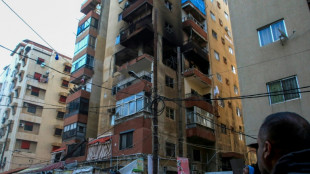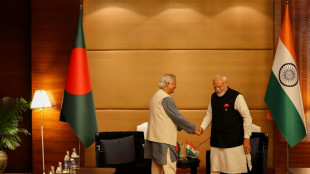

Civilians act to bring aid to Myanmar earthquake victims
A 21-year-old shopkeeper with little money of her own, Ei Hay Mar Hlaing has delivered more help to victims at the epicentre of Myanmar's devastating earthquake than most national or international aid organisations.
When she saw the carnage the 7.7-magnitude tremor had inflicted on the city of Sagaing in central Myanmar, she decided to act.
"Myself and my friends gathered our pocket money and asked for donations," she told AFP at her impromptu distribution site Thursday.
"We can't afford much because we are youths. We donated with what we had. If anyone can afford it, I would like to request them to help."
They loaded a truck with drinking water, instant noodles, energy drinks and electrolytes, plus first-aid kits, and headed to the disaster zone from their homes in Monywa, about 110 kilometres (63 miles) away.
In matching white helmets, she and around eight of her friends handed out supplies in a field next to a school in Sagaing.
Scores of would-be recipients whose homes have been destroyed or made uninhabitable packed tightly together, hoping to secure a share of the goods.
Lwin Myint, 56, was looking for help for her family of six.
"I came here to see if I can get some snacks and water," she said. "Now, we do not have a place to live.
"We haven't received anything except some packets of rice and curry, and water as we queue. I want some rice and oil if possible."
Another woman walked away with two bottles of water and a few packs of instant noodles, looking slightly dazed.
A tattooed pro-junta militiaman armed with an assault rifle paced between the queues of mostly women to maintain order.
Over several days in the disaster zone, AFP journalists have not seen soldiers actively taking part in rescue or aid efforts, aside from one group putting up tents for the displaced around Mandalay Palace.
International rescue teams -– many of them Chinese –- have been working at multiple disaster sites in Mandalay, but in neighbouring Sagaing, organisation logos are mostly remarkable by their absence.
Instead, the road to the city was jammed with civilian aid convoys from neighbouring regions, draped with banners declaring the aid was sent to victims by their fellow Burmese.
"Myanmar has been experiencing earthquakes, flood, fire and bombing. I am sad to see them," said Ei Hay Mar Hlaing, wearing a T-shirt emblazoned with "Believe Yourself".
"I want everyone to be okay," she said. "I want international communities to help us as much as they can."
At a World Food Programme site in the city -– the only international aid distribution AFP saw in Sagaing on Thursday -- bags of rice, boxes of fortified biscuits and bottles of sunflower oil were being handed out.
"The situation is really devastating" in Sagaing, said the UNDP's Resident Representative for Myanmar Titon Mitra, estimating 80 percent of buildings had been damaged, "50 percent probably severely".
"The markets are inoperable, the hospitals are absolutely overwhelmed, the structural integrity of the hospital itself is now compromised, so everyone is outside."
The hospital's medical director told Mitra he had received no international assistance.
"This is a crisis on top of a crisis on top of a crisis. The economy had collapsed, people's coping mechanisms had collapsed and on top of that, you have this earthquake.
"So, the short answer is that needs are immense."
R.Schmidt--MP



